Photographs: Anita Rao-Kashi Anita Rao-Kashi
Even six decades after our Independence, India's North East continues to remain elusive to most of the country. Anita Rao-Kashi recently travelled to Nagaland and returned with a bagful of memories.
Perched right at the far Northeastern tip of India, Nagaland sometimes appears to be in danger of falling off India's map.
The land of the fiercely proud Nagas (comprising 16 major tribes and scores of sub-tribes), it is intensely beautiful, rich in culture and vivid in colour, with customs and traditions that go back a long way.
Largely hilly, Nagaland is packed with forests and ever-changing scenery, with each scene better than the last. The tribes have come a long way from their head-hunting days (at least 200 years) and the people are shy but friendly, warm and hospitable.
Contrary to popular notion, the Naga diet is surprisingly ordinary; food is spicy and tasty, relying on rice, beef, pork, chicken, fish and greens and not overly difficult for vegetarians to subsist. Though the roads are a tad treacherous in places, it is also quire safe, all of which make for an eminently satisfying visit.
PHOTOS: Nagaland at its very best!
Image: KohimaPhotographs: Anita Rao-Kashi
Kohima
Nagaland's capital Kohima is itself located on a hill, or rather a series of hillsides. Winding roads and steep inclines make for a pretty town. It has a vibrant feel to and is as urbanized as any other Indian mid-level town.
Churches are scattered all over with the Catholic Church on Aradura Hill being the largest. A zoo and museum make for interesting viewing, but by far the War Cemetery maintained by the Commonwealth Graves Commission is a dignified place while the Kohima market is an interesting place to stroll around with such items as eels, mud snails and oakwood worms on display.
Just outside Kohima is Kisama, home to the Naga Heritage Village where the famous annual Hornbill Festival is held. A sprawling ground, it is designed to provide a glimpse of Nagaland in a nutshell with 16 morungs (traditional communal hostels), belonging to the various tribes and built in such as way as to represent their location on a map of Nagaland. Each is different and distinct, incorporating all major Naga symbols -- mithun (a kind of gaur) heads and horns, spears, daos (machetes), hornbill symbols, totem poles and monoliths.
PHOTOS: Nagaland at its very best!
Image: KhonomaPhotographs: Anita Rao-Kashi
Khonoma
About 20 km to the Southwest of Kohima is the picturesque Khonoma, located in the land of the Angami tribe, and famous for its fierce warriors and strategists. It is here that the British met their stiffest resistance.
These days however, the village has taken up a different fight. It has banned hunting and adopted measures for bio-diversity, earning the title of Green Village. The village houses are all green-roofed, the roads are lined with green dust bins and the village is lit by solar-powered street lights.
Inclined paths and rough-hewn steps run up and down the village. In the centre of the village is a set of communal water tanks fed by a pipe bringing water from somewhere in the hills used by families to wash clothes and bathe.
Some distance away, a long flight of steps, starting with the ceremonial village entrance, leads to a viewing point as well as to a white heritage monument commemorating the death of two British officers who died fighting the Naga warriors in 1879.
The almost 360 degree view, encompassing mountains, hills, valleys and farms, is breathtaking and beguiling, almost Wordsworthian.
PHOTOS: Nagaland at its very best!
Image: BenreuPhotographs: Anita Rao-Kashi
Benreu
Travelling further Southwest from Khonoma (about 65 km from Kohima) past villages with such charming names as Jotsoma and Dzulekie is the spectacularly beautiful village of Benreu in Peren district, home of the Zeliang tribe.
It is overlooked by the brooding Mount Pauna which is surrounded by fascinating legends and myths, including that of a God who arrives on a spaceship with headlights!
Like other villages, Benreu too is a curious stacking of houses up and down the hill side, with a central courtyard in which are a couple of shops, sacred Naga monoliths and a ceremonial village gate that leads down through a steep, rocky path.
Many morungs dot the village, some of them maintained in their original style, dark and dingy with smoke and soot, hearth in the middle, a long wooden platform which served as the communal bed and roofs lined the heads of animals that were killed by the inmates.
PHOTOS: Nagaland at its very best!
Image: TuophemaPhotographs: Anita Rao-Kashi
Tuophema
Lying in the heart of the land of the Angamis, Tuophema is a village about 40 km from Kohima. It is noted for its successful sustainable community development programme in setting up tourist cottages providing a glimpse into Naga culture and tradition and designed to look like Angami Naga houses but with all mod cons.
A traditional kitchen, an ancient log drum and breathtaking views of the mountain ranges complete the picture. Just an arm's distance away is the village itself, flanked by the rather morbid-sounding 'head-hanging tree.'
Up a steep incline, past tiny houses with even tinier kitchen gardens and the village meeting ground, one arrives at a set of two gigantic ritual oblong stones. Scattered around the village are traditional houses adorned with carvings of pouncing tigers, mithun heads and horns, spears and daos.
PHOTOS: Nagaland at its very best!
Image: MokokchungPhotographs: Anita Rao-Kashi
Mokokchung
Heading North from Kohima, Mokokchung is about 160 km. A strong hold of the Ao Naga tribe, the town is located almost entirely on a hill and is the biggest town in North Nagaland.
A winding road, past lovely vistas takes one to the musical sounding Mopungchuket. The village is almost perfect with clean streets and pretty houses. Two lovely and intricately carved log drums, morungs, a lake and a museum comprise the sights, along with a viewing tower that offers great panoramic views.
About 15 km from Mopungchuket, and through another winding road is the chirpy sounding, if not tongue-twisting, Chuchuyimlang, a rich repository of the Ao Naga traditions. Huts are lined along roads running off from the village centre with the usual morungs and log drums, while in the lanes it is common to see women busy weaving shawls, bamboo baskets and drying fruits and berries.
Some 30 km South of Mokokchung is Aizuto, land of the martial Sema tribe. A mysterious tank, dancers in the village common, haunting Naga songs, a hill top that offers fantastic 360 degree views and thick jungles rich with the sounds of birds make for a great visit.

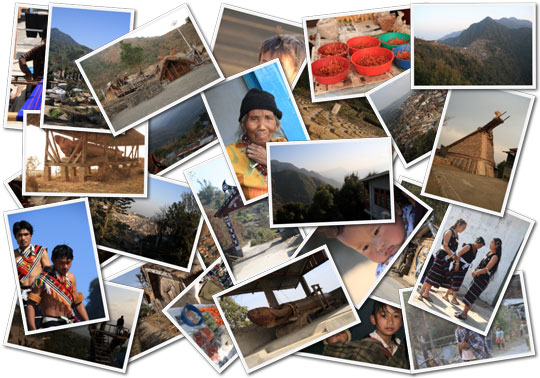
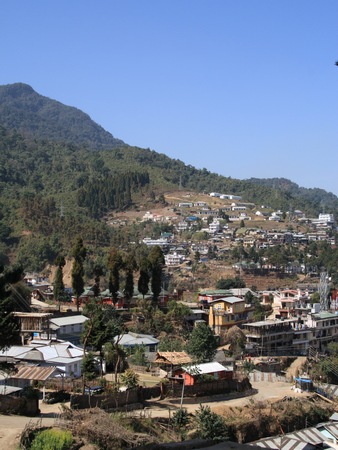
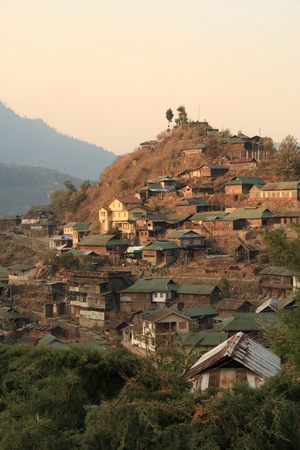
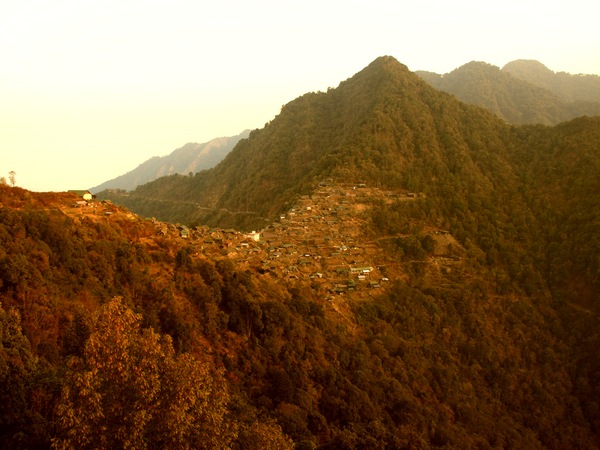

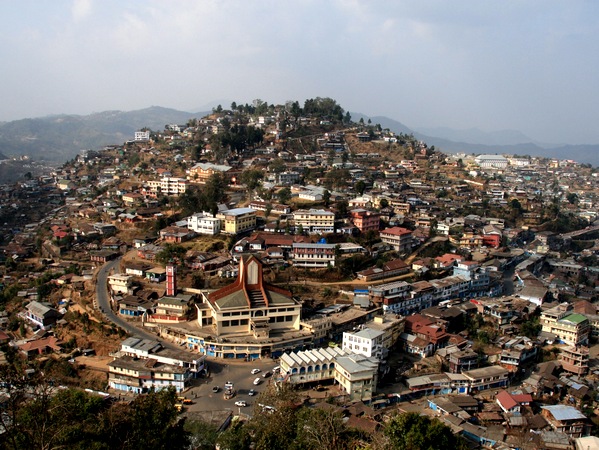
Comment
article